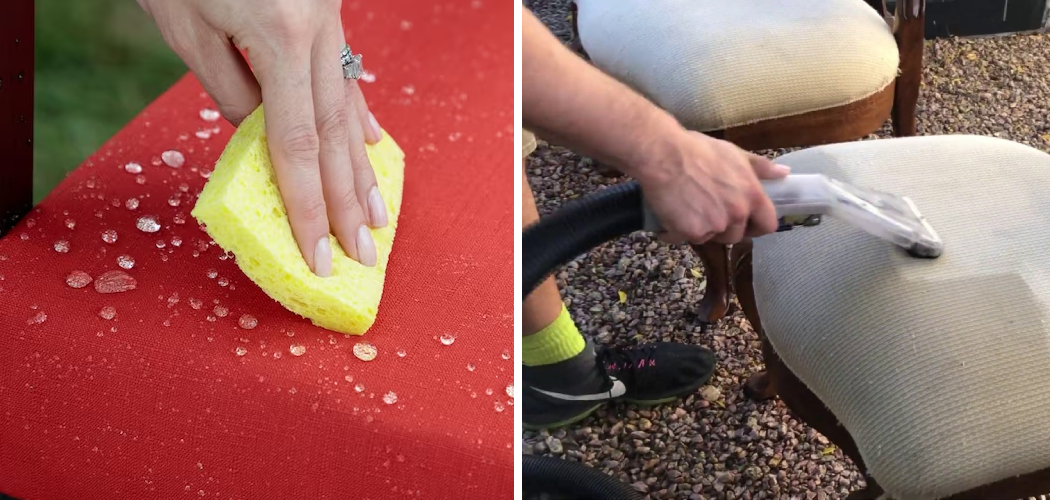Are you constantly worried about spills and food stains on your dining chair cushions? Don’t worry. We’ve got you covered! This guide will discuss the best methods to clean your dining chair cushions and keep them looking as good as new.
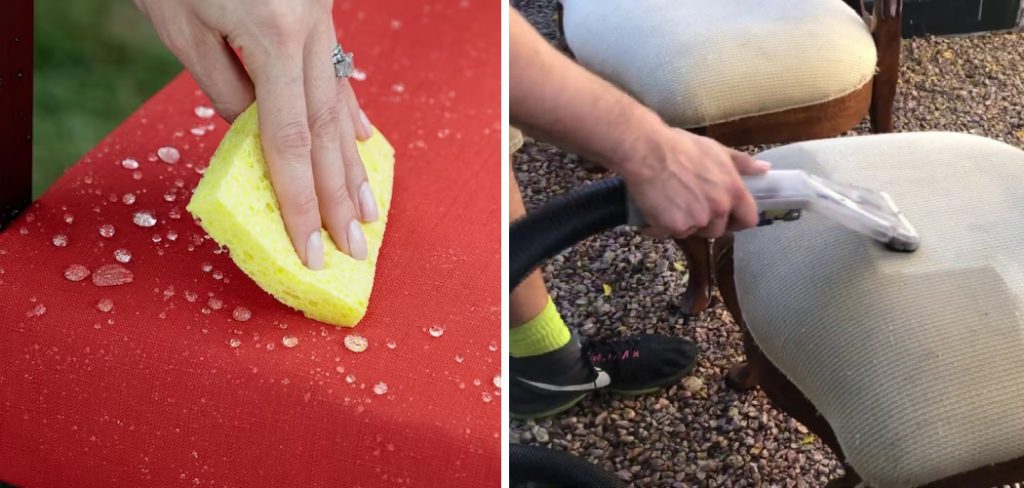
Let’s face it – keeping your home clean and tidy can be a challenge. But, when you invest in comfortable dining chair cushions, it only makes sense to keep them looking nice, too. With the right care tips, your cushions look fresh and free from stains or odors anytime unexpected guests arrive.
In this blog post, we’ll show you how to clean dining chair cushions with simple techniques that won’t take up big amounts of time or effort! So grab your cleaning supplies – let’s get started!
What Will You Need
Before we proceed with the cleaning process, you will need to gather some essential supplies:
- Mild detergent or dish soap
- Warm water
- Baking soda
- White vinegar
- A cloth or sponge
- Vacuum cleaner with an upholstery attachment (optional)
Once you have all these items, you’re ready to begin.
10 Easy Steps on How to Clean Dining Chair Cushions
Step 1: Vacuum the Cushions
If your dining chair cushions have removable covers, remove them and vacuum both sides. Use an upholstery attachment to remove any dust or debris that may have gathered on the surface of the cushions.
In case your cushions don’t have a removable cover, simply vacuum them while they are still on the chairs.
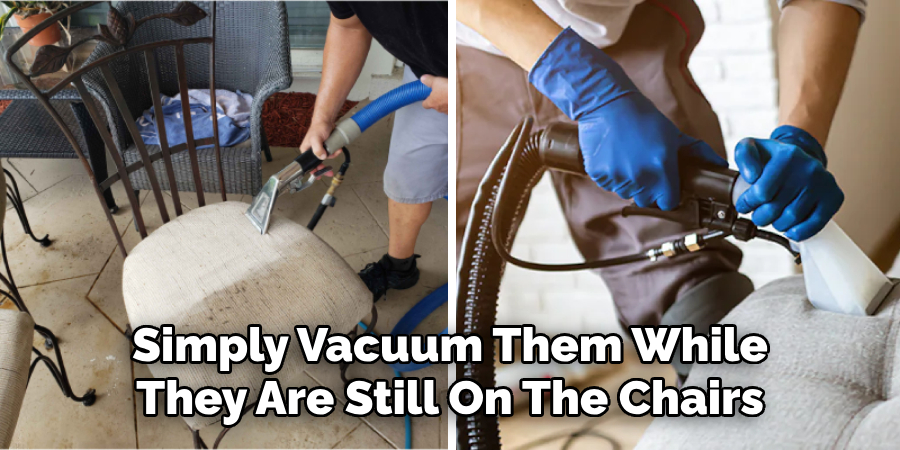
Step 2: Spot-Clean Any Stains
Identify any visible stains on your cushions. Apply a small amount of mild detergent or dish soap directly onto the stain. Using a damp cloth or sponge, gently blot the stained area. Remember not to rub the stain, as it can cause the stain to spread or get pushed deeper into the fabric. Rinse the cloth or sponge and repeat the process until the stain is gone.
Step 3: Create a Cleaning Solution
Mix warm water in a bucket or large bowl with a few drops of mild detergent or dish soap. This solution will be gentle enough not to cause discoloration but effective enough to clean the overall fabric of your cushions. If your cushions are heavily soiled, consider adding a cup of white vinegar to the mixture. The vinegar will help to break down the dirt and grime without causing damage to your cushion’s fabric.
Step 4: Deep Clean the Cushions
Soak your sponge or cloth in the cleaning solution you’ve prepared. I wring it out so it’s not dripping but still wet. Gently scrub your cushions with a cloth or sponge, paying particular attention to any areas that are stained or heavily soiled. Ensure you clean every part of the cushion, including the edges and corners, to maintain a uniform appearance. Once finished, use a clean, dry cloth to pat any excess moisture off the cushions.
Step 5: Rinse and Dry
Fill a bucket with warm water, and use a clean cloth or sponge to rinse your cushions. Carefully blot the cushions with the damp cloth, making sure to remove all the soap. Once you’ve thoroughly rinsed the cushions, use a dry towel to blot any excess water. Then, allow the cushions to air dry completely. Do not place them back on the chairs until they are fully dry to avoid any potential mildew growth.
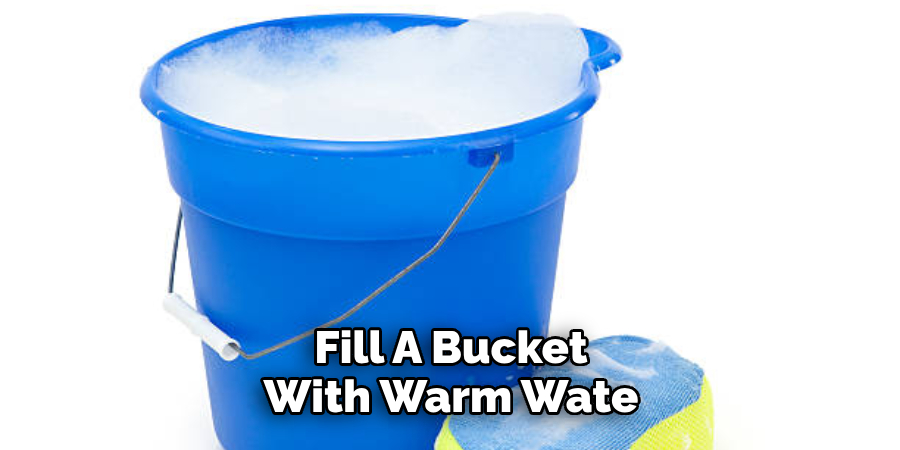
Step 6: Deodorize the Cushions
After your cushions are completely dry, you may notice some lingering odors. Especially if your cushions have been subject to food spills or pet accidents, a simple clean may not eliminate these smells.
To deodorize your cushions, sprinkle a generous amount of baking soda over them. Let the baking soda sit for at least one hour as it absorbs lingering odors. After the hour, thoroughly vacuum the cushions again to remove the baking soda. Your cushions should now smell as fresh as they look!
Step 7: Regular Maintenance
To keep your dining chair cushions fresh and clean, incorporate regular care into your routine. Vacuum the cushions weekly to remove dust and debris. For minor spills, quickly blot with a clean cloth to prevent the liquid from seeping into the fabric.
Consider using a fabric spray or upholstery protector to repel stains and make future cleaning easier. With these simple preventative steps, your dining chair cushions will maintain their appearance and cleanliness for longer.
Step 8: Protection Against Future Stains
Consider using a fabric protector spray to prevent future stains and prolong the life of your dining chair cushions. This product creates a water and dirt-resistant barrier on the fabric, making it easier to clean up spills before they set in.
Always test the spray on a small, inconspicuous area of the fabric first to ensure it won’t cause discoloration. Once you’ve confirmed it’s safe, spray the entire cushion surface and let it dry completely. Remember to follow the manufacturer’s instructions for best results.
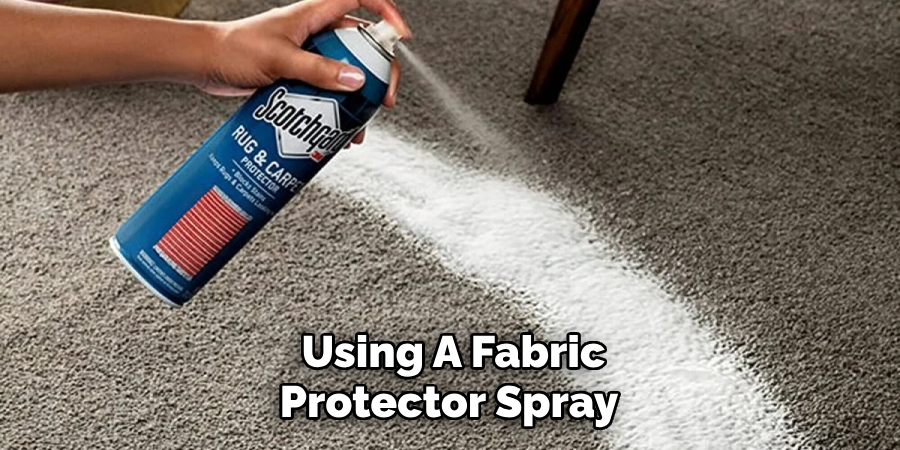
Step 9: Putting the Cushions Back
Once your cushions have dried completely and you’re satisfied with their freshness and cleanliness, it’s time to put them back on the chairs. Ensure you correctly line up any fasteners or ties, ensuring the cushions are secure. This maintains the look of your dining set and ensures safety and comfort for those using the chairs. Now, you can enjoy your meals and gatherings without worrying about the state of your dining chair cushions.
Step 10: Periodic Deep Cleaning
Despite regular maintenance and spot cleaning, cleaning your dining chair cushions deep every few months or as needed is important based on their usage. This will help to maintain their color, fabric quality, and lifespan.
Always follow the cleaning instructions provided above whenever you notice significant dirt build-up or when the cushions lose their fresh smell. With these steps, your dining chair cushions will always be ready for any occasion!
Following these ten easy steps ensures that your dining chair cushions are always clean and fresh.
5 Additional Tips and Tricks
- Test Cleaning Products First: Before applying any cleaning solution to your dining chair cushions, test it on an inconspicuous area first. This will ensure that the product will not damage or discolor the material.
- Vacuum Regularly: Regular vacuuming can help remove dirt and crumbs that can get embedded in your cushions. A handheld vacuum or an upholstery attachment on a standard vacuum does a great job.
- Attend to Spills Immediately: The key to preventing stains on your dining chair cushions is to tackle spills immediately. Use a clean cloth to blot the spill until all excess liquid is absorbed.
- Avoid Direct Sunlight: Try to avoid direct sunlight on your dining chair cushions. Long-term exposure to sunlight can fade and weaken the fabric.
- Rotate and Flip Cushions: Regularly flip and rotate your cushions to ensure even wear and tear. This practice can also help to maintain the cushion’s shape over time.
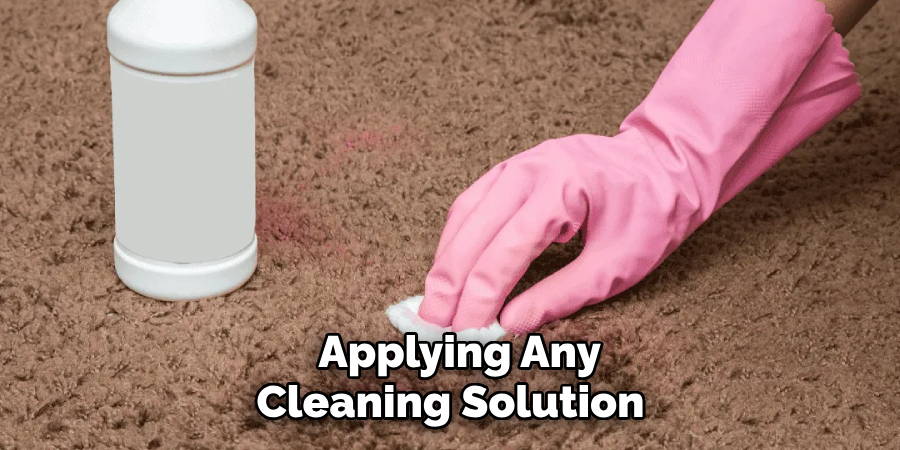
With these additional tips and tricks, you can keep your dining chair cushions looking clean and vibrant for longer.
5 Things You Should Avoid
- Avoid Over Wetting: While cleaning your dining chair cushions, be cautious not to over-saturate them with water or cleaning solution. Too much liquid can seep into the padding and cause issues like mold or mildew.
- Never Rub Stains: Rubbing a stain may seem like a good way to get it out, but it can spread the stain or push it deeper into the fabric. Always blot stains gently, working from the outside in.
- Steer Clear of Harsh Chemicals: Harsh cleaning agents can degrade the fabric of your cushions over time. Always opt for gentle, fabric-safe cleaners.
- Do Not Ignore Care Labels: If your dining chair cushions have care labels, do not ignore them. They provide valuable information on cleaning and properly caring for the material.
- Avoid Delayed Cleaning: A small stain or spill may not seem like a big deal, but delaying cleaning can cause it to set and become much harder to remove. Prompt cleaning is always best.
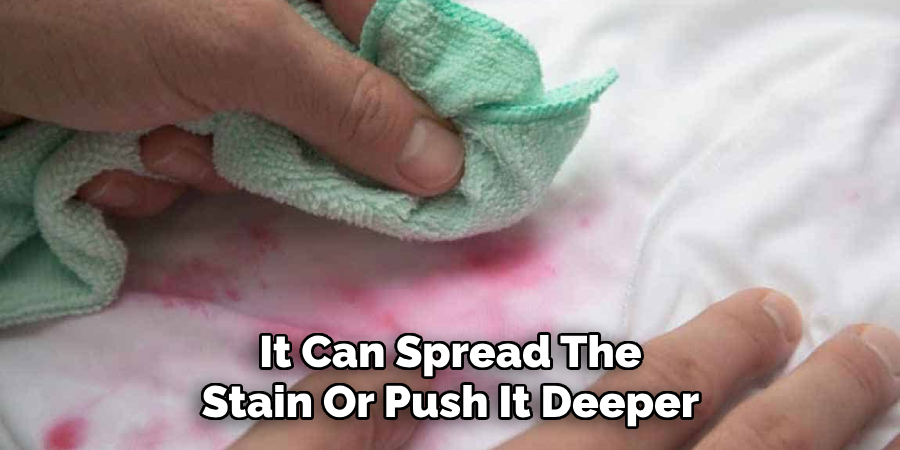
By avoiding these common mistakes, you can extend the life and beauty of your dining chair cushions.
How Do You Clean Non Washable Cushions
If your dining chair cushions are not machine washable, you can still clean them with a few simple steps:
- Remove any debris: Start by removing loose debris or crumbs from the cushion.
- Spot cleaning: Use a mild detergent and warm water to spot clean any visible stains on the cushion. Gently scrub the area with a soft brush or cloth.
- Rinse with clean water: After spot cleaning, use a clean, damp cloth to rinse the area and remove any leftover detergent.
- Air dry: Allow the cushion to air dry completely before placing it back on your chair.
- Vacuum regularly: Keep your non-washable cushions clean by regularly vacuuming them with a handheld or upholstery attachment.
With these simple steps, you can keep your non-washable cushions clean and fresh. Remember to always check the care label for specific cleaning instructions before proceeding.
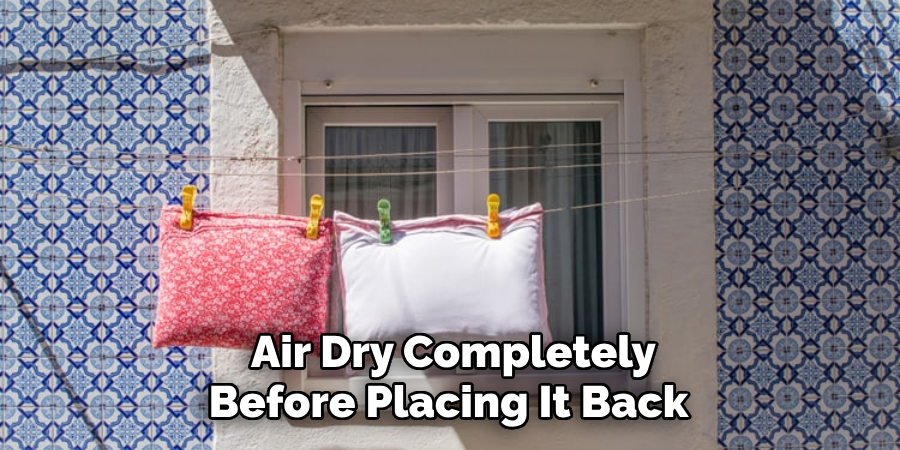
What Type of Cleaning Solution Should You Use
When choosing a cleaning solution for your dining chair cushions, a few options are available. Here are some common solutions and their recommended uses:
- Mild detergent: A mild detergent mixed with warm water is suitable for spot cleaning stains on most fabric cushions.
- Vinegar and water: For tougher stains or odors, a mixture of equal parts white vinegar and water can be used as a natural cleaning solution.
- Baking soda: For light stains or refreshing your cushions, sprinkle baking soda onto the surface, let it sit for an hour, then vacuum it off.
Always test any new cleaning solution on an inconspicuous area first before applying it to the entire cushion. This will help prevent any potential damage or discoloration.
When Should You Change Your Dining Chair Cushions
Even with regular cleaning and proper care, dining chair cushions will eventually need to be replaced. Here are some signs that it may be time to change your cushions:
- Lack of support: Over time, the padding in cushions can become compressed and lose its ability to provide support. It may be time for a change if you notice that your cushions are no longer comfortable.
- Fading or discoloration: As mentioned earlier, prolonged exposure to sunlight can cause fading and discoloration on fabric cushions. It may be time for an update if your cushions have noticeable color changes.
- Tears or damage: If your cushions have tears, rips, or other damage that cannot be easily repaired, it may be time to replace them.
- Lack of cleanliness: Despite regular cleaning, some cushions may reach a point where they can no longer be fully restored. If your cushions are stained, discolored, or have an unpleasant odor that cannot be removed, it may be time for new ones.
Overall, the lifespan of your dining chair cushions will depend on their quality, usage, and care. By following the tips in this guide, you can prolong the life of your cushions and keep them looking clean and fresh for longer.
Conclusion
As you can see, cleaning dining chair cushions is a relatively simple task that will pay off dividends in terms of having a cleaner, healthier, and more inviting space to enjoy eating meals.
Clean cushions will look nicer to the eye and prevent dirt and dust from building up in hard-to-reach places. With just a few tools and time, you can turn your dining chairs into newly refreshed furniture that exude comfort and sophistication!
Taking good care of furniture is an effective way to make it last longer and to ensure that everyone in the household stays healthy. Give yourself a pat on the back for completing this task- you deserve it!
Hopefully, the article on how to clean dining chair cushions has given you the knowledge and confidence to tackle this chore with ease. Avoid common mistakes, use the right cleaning solutions, and replace your cushions when necessary. With these tips, your dining chair cushions will stay clean and inviting for years to come. Happy cleaning!
